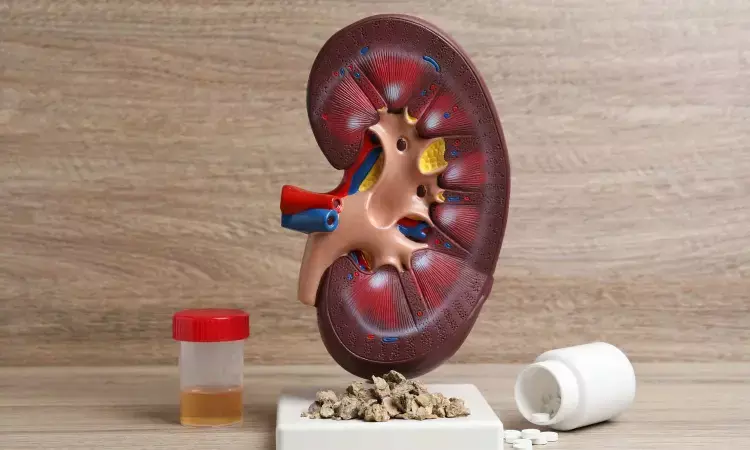- Home
- Medical news & Guidelines
- Anesthesiology
- Cardiology and CTVS
- Critical Care
- Dentistry
- Dermatology
- Diabetes and Endocrinology
- ENT
- Gastroenterology
- Medicine
- Nephrology
- Neurology
- Obstretics-Gynaecology
- Oncology
- Ophthalmology
- Orthopaedics
- Pediatrics-Neonatology
- Psychiatry
- Pulmonology
- Radiology
- Surgery
- Urology
- Laboratory Medicine
- Diet
- Nursing
- Paramedical
- Physiotherapy
- Health news
- Fact Check
- Bone Health Fact Check
- Brain Health Fact Check
- Cancer Related Fact Check
- Child Care Fact Check
- Dental and oral health fact check
- Diabetes and metabolic health fact check
- Diet and Nutrition Fact Check
- Eye and ENT Care Fact Check
- Fitness fact check
- Gut health fact check
- Heart health fact check
- Kidney health fact check
- Medical education fact check
- Men's health fact check
- Respiratory fact check
- Skin and hair care fact check
- Vaccine and Immunization fact check
- Women's health fact check
- AYUSH
- State News
- Andaman and Nicobar Islands
- Andhra Pradesh
- Arunachal Pradesh
- Assam
- Bihar
- Chandigarh
- Chattisgarh
- Dadra and Nagar Haveli
- Daman and Diu
- Delhi
- Goa
- Gujarat
- Haryana
- Himachal Pradesh
- Jammu & Kashmir
- Jharkhand
- Karnataka
- Kerala
- Ladakh
- Lakshadweep
- Madhya Pradesh
- Maharashtra
- Manipur
- Meghalaya
- Mizoram
- Nagaland
- Odisha
- Puducherry
- Punjab
- Rajasthan
- Sikkim
- Tamil Nadu
- Telangana
- Tripura
- Uttar Pradesh
- Uttrakhand
- West Bengal
- Medical Education
- Industry
Ureteral Wall Thickness Key Indicator for Stone Impaction

A new study published in The Journal of Urology suggests that noninvasive assessment of ureteral wall thickness indicates the likelihood of ureteral stone impaction, and the readings indicate favorable results.
Unfavorable endourological outcomes are linked to ureteral stone impaction, although there are few accurate predictors of stone impaction. In this study, Nicholas Dean and colleagues sought to determine how well the thickness of the ureteral wall performed as a predictor of ureteral stone impaction and the failure rates of shock wave lithotripsy, spontaneous stone passage, and retrograde guidewire and stent passage.
The PRISMA (Preferred Reporting Items for Systematic Reviews and Meta-analyses) standards were followed in the completion of this investigation. A search was done in April 2022 using PROSPERO, OVID EMBASE, OVID Medline, Proquest Dissertations & Theses Global, Wiley Cochrane Library, and SCOPUS for all adult, human, and English language research examining ureteral wall thickness. Using a random effects approach, a systematic review and meta-analysis was carried out. The MINORS (Methodological Index for Non-randomized Studies) score was used to evaluate the risk of bias.
The key findings of this study were:
34 studies were considered in our qualitative examination, and 14 studies totaling 2,987 patients were pooled for the quantitative analysis.
According to meta-analysis results, a smaller ureteral wall thickness is linked to better subgroup stone outcomes.
In addition to better rates of spontaneous stone transit, effective retrograde guidewire and stent installation, and improved shock wave lithotripsy results, thinner ureteral wall thickness also signals a lack of stone impaction.
There is no established method for measuring the thickness of the ureteral wall in studies.
The necessity for a uniform ureteral wall thickness methodology is confirmed by the variation in measuring techniques, and the clinical value of ureteral wall thickness has not yet been established.
Reference:
Dean, N. S., Millan, B., Uy, M., Albers, P., Campbell, S. M., Krambeck, A. E., & De, S. (2023). Ureteral Wall Thickness Is an Effective Predictor of Ureteral Stone Impaction and Management Outcomes: A Systematic Review and Meta-analysis. In Journal of Urology (Vol. 210, Issue 3, pp. 430–437). Ovid Technologies (Wolters Kluwer Health). https://doi.org/10.1097/ju.0000000000003561
Neuroscience Masters graduate
Jacinthlyn Sylvia, a Neuroscience Master's graduate from Chennai has worked extensively in deciphering the neurobiology of cognition and motor control in aging. She also has spread-out exposure to Neurosurgery from her Bachelor’s. She is currently involved in active Neuro-Oncology research. She is an upcoming neuroscientist with a fiery passion for writing. Her news cover at Medical Dialogues feature recent discoveries and updates from the healthcare and biomedical research fields. She can be reached at editorial@medicaldialogues.in
Dr Kamal Kant Kohli-MBBS, DTCD- a chest specialist with more than 30 years of practice and a flair for writing clinical articles, Dr Kamal Kant Kohli joined Medical Dialogues as a Chief Editor of Medical News. Besides writing articles, as an editor, he proofreads and verifies all the medical content published on Medical Dialogues including those coming from journals, studies,medical conferences,guidelines etc. Email: drkohli@medicaldialogues.in. Contact no. 011-43720751


